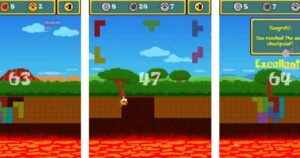A New Season With Real Stakes for PuffGo’s Competitive Scene
PuffGo, the cartoon-style multiplayer brawler that blends chaotic party gameplay with Web3 incentives, is launching its second official league season. This time, the competition brings a significant shift in how ranked progression works, along with a reward pool that includes a full million PFVs.
The move marks a more structured approach for the title, which has mostly leaned casual up to now. With its growing player base and a refined matchmaking system, Season 2 is positioning PuffGo less like a Fall Guys clone and more like a legit PvP ecosystem built around skill and time investment.
Gameplay Still Centers on Accessible Chaos
At its core, PuffGo remains what it’s always been: a fast-paced blend of platforming, minigames, and chaotic survival rounds. The matches are short, colorful, and unpredictable, with up to 30 players in a free-for-all sprint to the finish. But behind that slapstick surface is a ranking system that now ties into real rewards.
The key change is how progress is tracked. Instead of just pushing through casual lobbies, players now climb a tiered leaderboard that resets each season. Wins, eliminations, and overall placement feed into a performance score. That score determines PFV payouts and access to special event tiers.
Web3 Layer Powers Reward Distribution
The PFV token sits at the center of PuffGo’s economic system. While not required to play, PFVs are the main reward currency and are stored on-chain. Top performers in Season 2 will earn from the 1 million token prize pool, with rewards distributed based on rank and participation level.
Unlike more complex Web3 games that overload users with tokenomics, PuffGo keeps the blockchain layer mostly invisible during matches. You queue, you play, you earn , and everything else happens on the backend. For players used to Web2 matchmaking, the flow is mostly familiar.
Ranking Up Adds Progression Without Paywalls
Season 2 introduces a formal league system, with divisions and ranks players move through over time. Importantly, this isn’t a pay-to-win structure. While cosmetic upgrades and seasonal passes exist, the core competitive ladder is skill-based. That separates PuffGo from a lot of other blockchain games that lean too hard into spend-to-compete models.
It’s a smart move, especially if the devs are trying to build a sustainable competitive scene. By tying meaningful rewards to performance rather than purchases, they tap into the kind of motivation that keeps people playing — not just grinding for loot but actually trying to improve.
Season Structure Reflects a Larger Shift in Web3 Games
The second season of PuffGo isn’t just about content updates. It’s a signal of where mid-tier Web3 games are heading: toward systems that feel more like traditional multiplayer games, with just enough blockchain under the hood to enable real-value rewards.
There’s still a lot to prove when it comes to long-term retention, especially in a crowded space full of experimental token models. But PuffGo’s balance of casual visuals, tight competition, and token-backed incentives puts it in a rare lane, one that doesn’t rely on hype or massive buy-ins to function.
Web3 Analyst & Play Blockchain Games Guide
CryptoKit breaks down Web3 gaming like it’s second nature. From tokenomics to airdrop strategies, she turns blockchain chaos into clear, actionable advice for players who want to win more than XP.




